How A Lookalike Report Helps You Increase Sales
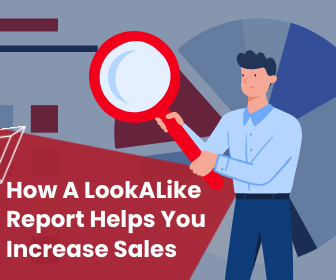
LookALike audiences have been a go-to targeting tool for almost a decade. Even before digital marketing, marketers used current audience demographics to target potential customers. With a growing number of AI tools available, businesses of all sizes have access to LookALike targeting. How can you use a LookALike Report to increase sales?
What is a LookALike Report?
Pioneered by Facebook in 2013, a LookALike report uses common attributes and demographics of your current audience to find more customers who “look like” them. These attributes can be anything from age and location to interests and hobbies. The more commonalities between your audience the more accurate your LookALike report will be.
Although originally only a tool on social media, LookALike reports are now available on many different types of platforms. For example, we often build LookALike reports with raw CRM data.
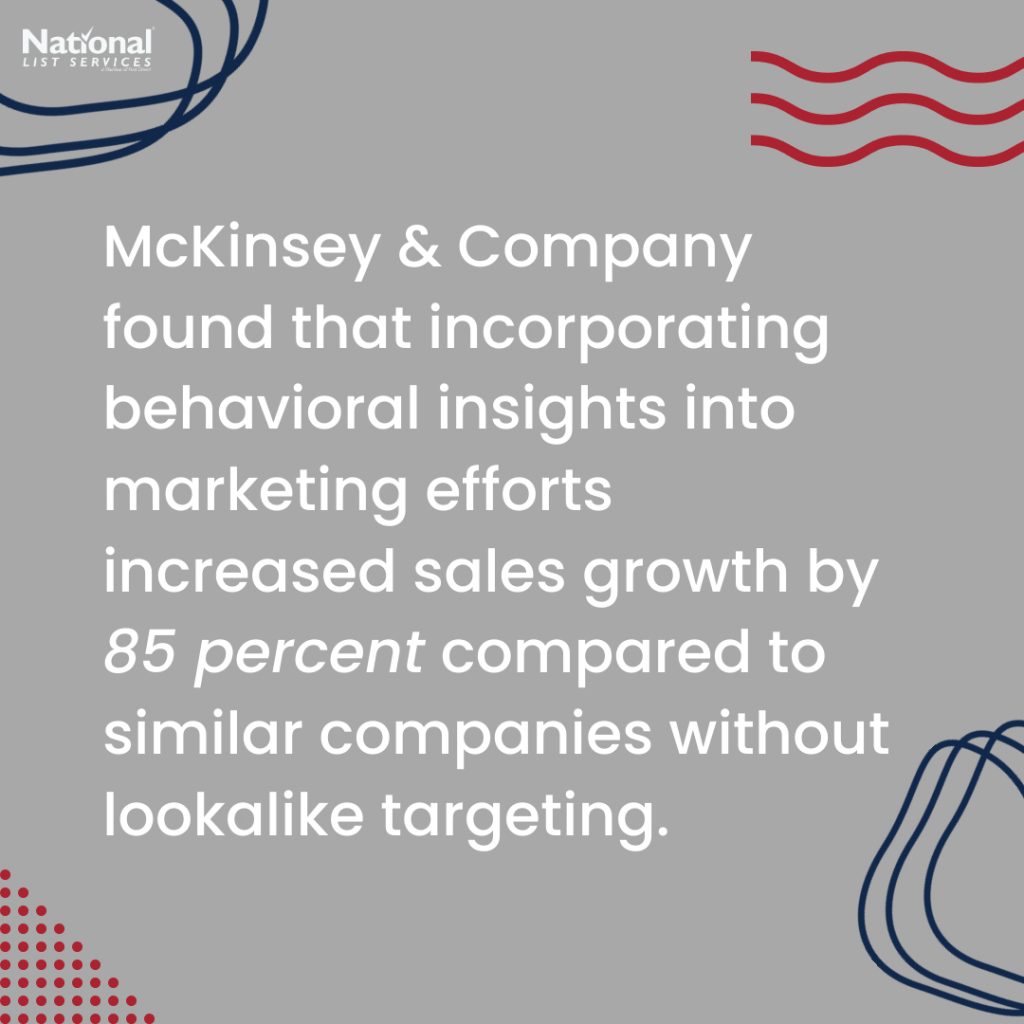
How to Maximize Your Report to Increase Sales
As great as it would be to dump all your current audience information into a LookALike report and get back a list of new customers, it usually takes a more finesse than that. Here’s 5 tips and tricks to take out some of the guess work.
#1 Define Your Audience
The goals of LookALike reports can be different so it’s important to start with the right data seeds or source audience. Since LookALike reports are based on the data you input, it really important that the data you start out with is accurate and will accomplish what you want. For example, do you want to find new customers that are like all your customers or like your best current customers?
The amount of data you can use to start with varies greatly. Facebook recommends anywhere between 1,000 and 50,000 people. Although they do say that starting with “a larger audience increases your potential reach but reduces the level of similarity between the Lookalike Audience and source audience.” Those differences between your source data and LookALike audience could be the difference between a sale or not.
Where can you get source data? Here’s three different source audiences:

- CRM Data
Seeds defined by existing CRM data match lookalike audiences with information gathered from existing customers, such as email, physical addresses, and phone numbers. However, this data is usually too broad and needs to be narrowed down to create an accurate base for a LookALike report.
- Social Media Engagement Data
Data from social media audience can also be used as a seed that a LookALike report is based on. This data is usually based on characteristics like page views and likes.
- Conversion Data
Source data based on conversion data are usually your “best customer” seeds. These are customers who have already competed and action with your business.
#2 Get Used to Segmenting Your Data
Building out your LookALike report will be a lot easier when you have a specific product or audience segment in mind. Knowing what you want to use this new audience data for will help you pick the right demographics to target. This is where audience segmenting comes in. Finding the right demographics will be easier if you already have your audience data organized or tagged by demographics.
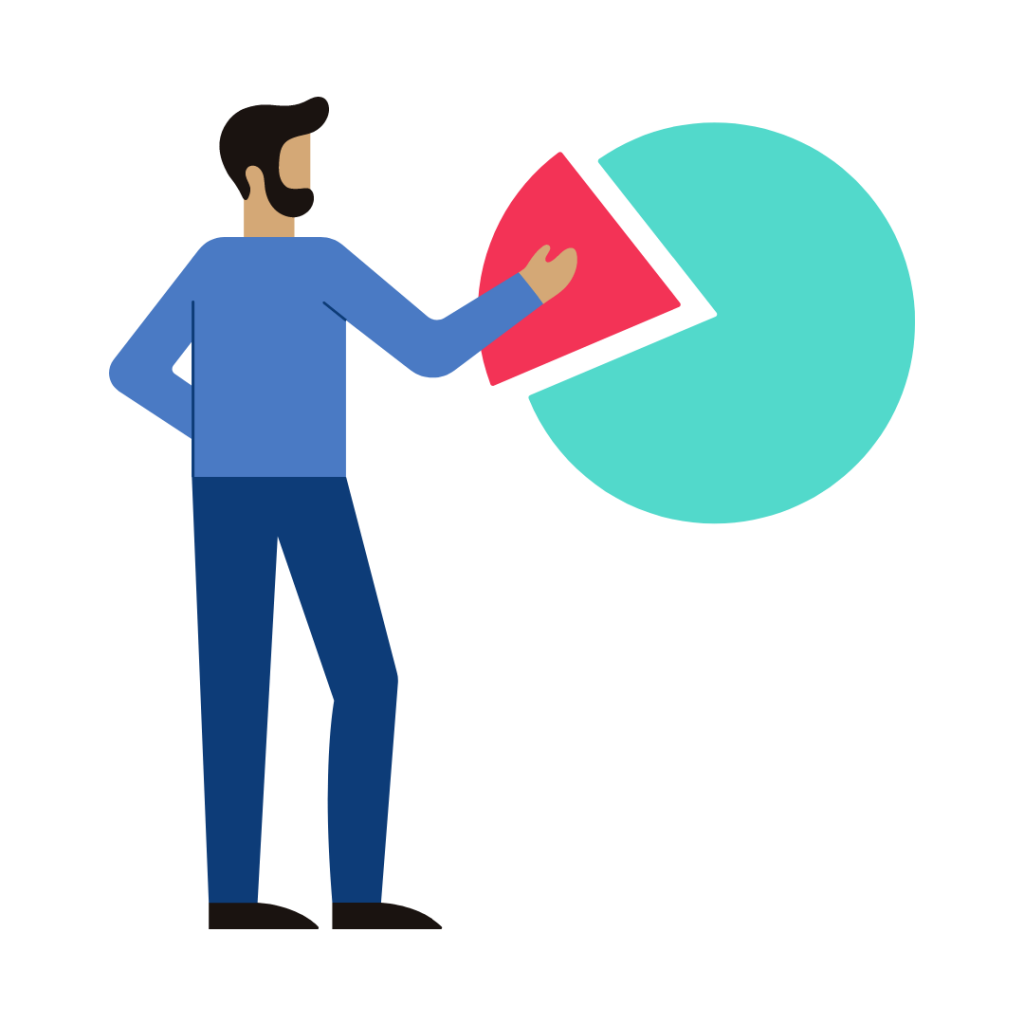
#3 Connect Your LookALike Goals to Your Marketing Goals
Targeting using a LookALike audience can give you a higher ROI and help you reach your marketing targets. For example, if your company has found that you get higher engagements on mobile devices, you can build a LookALike report from those people. By targeting those people, you can direct your marketing efforts towards the audience most likely to help you reach your goals.
#4 Target and Retarget and Retarget
Targeting the right audience is effective, retargeting adds even more. Using a LookALike audience in a retargeting campaign adds to specific information gathered in the initial campaign. And since retargeting uses a lot of the same principles as building a LookALike audience, they go hand in hand.
#5 Switch Up Your Platforms
Facebook isn’t the only platform that supports LookALike reports. Many online platforms have LookALike audience builders built in. Switch up your platform to test new audiences and ways of reaching them. And as we mentioned earlier, we often use raw CRM data to build a LookALike report within our list system. The data we get from those reports can be used for any type of marketing.
Have you ever used a LookALike Report?
Your Marketing Needs These 9 Videos
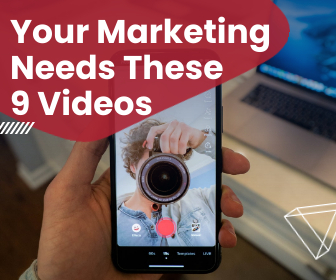
Did you know that are NINE types of videos your business needs? Gone are the days when the only video advertising was television commercials. Now, video is ever-present in our lives. For example, over 2 BILLION users log into YouTube every month. Just like any other tool available, as a business, your brand is going to need different things from different types of videos. Are you using all the kinds of video?
Since different types of videos are used for different things, it’s important to have a well-rounded video strategy. One that helps attract customers, educate them, converts, as well as creates customer engagement and builds relationships. Some types of videos that do that are webinars, promos, digital display, social content, and personalized videos for customers. Some of those are best when heavily scripted and polished, others are great when they feel quickly thrown together. What you need depends on what need you are trying to fill and where the target viewer is on their customer journey. It also depends on how much time, effort, and/or money to pour into video creation.
Explainer Videos
Explainer Video are quick 30-60 videos that explain who you as a company are. It’s basically a pitch video. They great for top of funnel interactions where you need to introduce yourself to potential customers and convince them why they should care about you. They work best when they are made with the audience in mind and feel personal. Don’t forget a strong call-to-action!
You can use Explainer Videos on your website, (think homepage videos) on social media, including YouTube, as well as in ads.
How-To Videos
How-to videos are great for any point of the funnel, can be just about any length, and be used for anything other than ads. However, they don’t need to be extremely high quality or super polished. A real person-to-person feel is more effective. The point of a how-to video is to explain something in a way that will provide valuable content to your audience. This is not the time for a hard sell.
How-to videos are super engaging online because it can feel like pulling back the curtain and letting your audience in on trade secrets!
Promo Videos
Promo videos are basically the general term for commercials. Think short, polished, story driven, exciting videos with strong call-to-actions. They can be used anywhere you need to promote something!
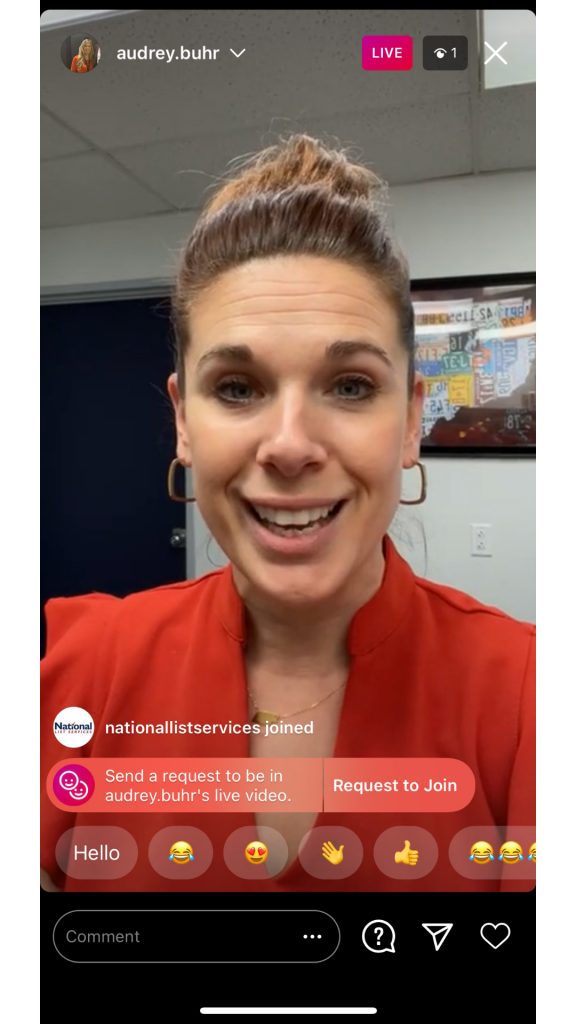
Talking Head Videos
Talking head videos could also be categorized as thought leadership videos. These videos are when you put yourself in front of the camera and share your personality and point of view. These are not designed for a hard sell but instead to show viewers your authentic self and brand personality. Talking head videos work best on social media and on YouTube.
Webinars
I’m going to include podcast videos here as well, (like the video recordings that most podcasts film while recording.) Webinars are inherently educational and therefore the focus needs to be on providing content for your viewers, not selling them. Most webinars are between 15-60 mins. And like in person seminars, they can take many forms: live Q&A’s, lectures, or panels.
Hosting a webinar takes a bit of IT knowledge so it’s totally ok to use a hosting service! It’s a good idea to have a moderator (and maybe an A/V guy) on hand for any troubleshooting or technical difficulties. After the webinar is finished you can make it available for on-demand viewing, as well as cutting the webinar up into smaller clips.
Case Study Video
A case study tells the story of how a real customer uses your product. It provides validation from a third party. Case study video work best when they are clearly planned out and polished. Include the customer/video star on the planning process, that will make the video more authentic. Focus the video more benefits rather than features and back up the information with data.
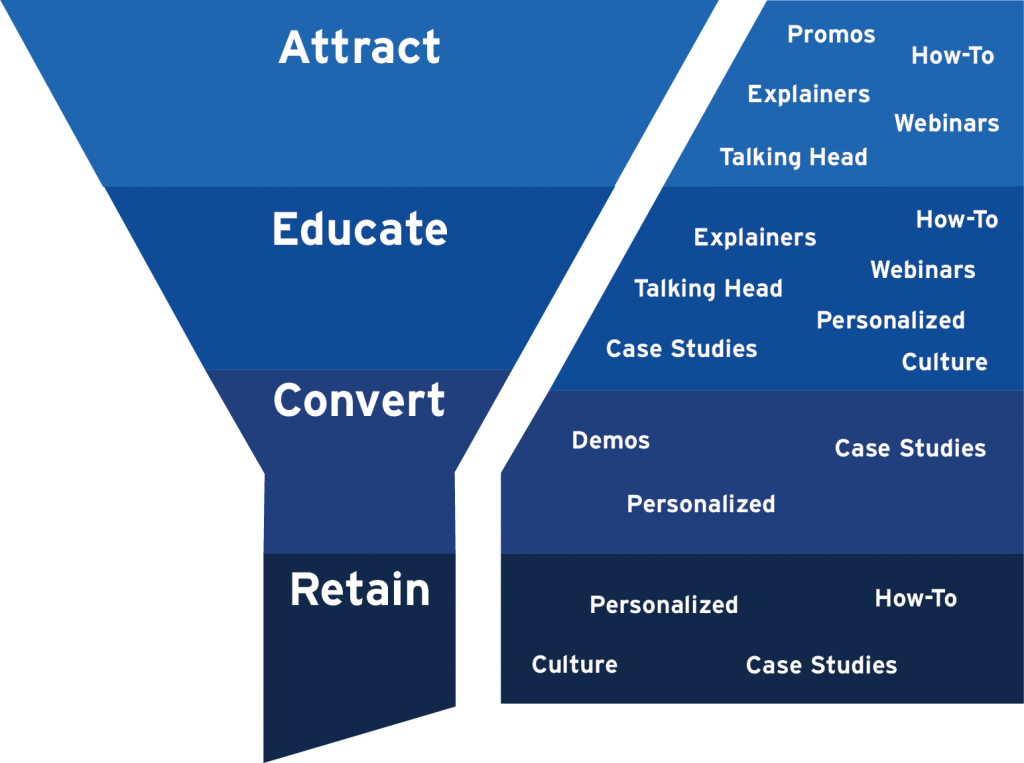
Fun/Culture Videos
These videos are a way to highlight your company’s culture and personality. They help tell your brand story and personality. Often these videos are narrative driven, fun, and humorous. A good example of culture videos is pretty much every company’s TikTok. They are quick and fun and feel personal.
Demo Videos
A demo video is a video that highlights how a product or service actually works. It’s there to educate and inform viewers. Keep the video as concise as possible. They can take a few forms: a broad overview, pre-recorded demo, or live demonstration. For example, we have broad overview demos of National List Services on YouTube, we prerecord demos to onboard clients or answer technical questions, (Loom is great for this) and we often do live demos when showing potential clients how our systems work.
Personalized Videos
Who doesn’t love a personalized video? Sending videos instead of texts or emails to clients is a big part of our follow up. It’s so much more touching to see someone’s face and hear your name than just a written follow up. Because of the nature of our business there are some clients we have never actually met face to face and sending them a personalized video can help bridge that gap.
So, with so many avenues and different types of videos, it’s easy to see why it’s such a popular marketing tool. How do you use video in your marketing?
Scared of Content Creation? Here’s 6 tips

Content creation is an integral part of marketing or running a business in general now. Even if you don’t think that you are a quote-on-quote content creator, you probably do create content. Every time you post on Facebook or update Instagram, that’s content. What are some easy things you can do to up your content game?
Here’s 6 things we have found to be essential in making quality content!
Know Your Audience
The content you create for one audience can be very different from another. Understanding the WHO is helpful first step.
It can also be helpful if you think of your audience as a single composite person. Instead of trying to talk to all of them, you are instead making content for one person. A lot of companies do this by making a buyer persona. That way you can think, “Would my buyer persona like this?” vs. “Would all my followers enjoy this content?”
Make a Plan
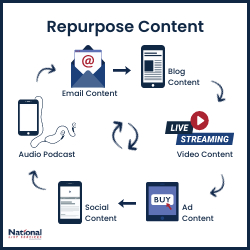
There is nothing more overwhelming than trying to maintain consistent content posting across multiple channels without a plan. It can feel like juggling snakes. 🐍 Making a plan can be as simple as figuring out what types of content you want to post and when it would be best to time to post it. The more specific your plan is the more you time you take out of the equation.
Part of making a plan is planning out your message and/or your angle. Now that you know who your audience is, think about what type of content would work best for them. Knowing what you want to talk about can make it easier to figure out what types of content would be best. Would your audience benefit from long form blog articles or would a TikTok series be more helpful? Both of those types of content take a lot of effort, so planning it out ahead of time is valuable!
Keep It Simple and Honest
Don’t make it harder than it needs to be. No matter who your audience is, needlessly complicated language or content structure isn’t appreciated. Simple and honest is always good. Remember, why you are making the content. Is it to promote you or your brand? Then tone of the content should match your voice. People can see right through any inauthenticity if you are trying to make something that isn’t you.
It’s easier to connect with a brand online if you feel like you are talking to a real person. Does the content you are making sound personal?
What is the Purpose of Your Content?
Why do you want to make this content? Keep the big picture of your content in mind as well as each individual piece. Are you trying to promote a specific product or service? Don’t be afraid to include a call to action in your content! A call to action is how to accomplish the goal of your content. It’s the follow through.
A good call to action is simple and concise. It uses strong verbiage. Give your audience a good reason to take the desired action. Don’t be afraid to get creative!
Take a Step Back
When it comes to content, it’s often valuable to take a step back and from your project and let it rest for a bit. The longer you work on a piece of content the easier it is to be become blind to mistakes, errors, and typos. You may be surprised by the power of fresh eyes!
An old copy writer trick is to proofread backwards. Instead of starting at the beginning of your content: start at the end. Because your brain is following a different path through the information, it sees things in a different way. Starting at the end allows you to look at it sentence by sentence instead of word by word or thought by thought. Knowing your content is edited well will help you feel more confident in posting it.
Another aspect of taking a step back from your content is revisiting old content. Repurposing or adapting finished content is an excellent way to stay inspired and make more content. There are always new things that can be added. Adding information keeps your messages up to date. Up-to-date content is more accurate and provides for value to your followers. Another reason to recycle content is that it gives more people an opportunity to see it. And even if someone has been following you for a long time there’s a good chance that they didn’t see the content the first time around.

Keep Consuming Content
This is my favorite part. 😜 One of the best ways to keep your own content sharp is to consume other content. It can inspire you, help you stay up to date with current trends, and keep your skill sharp. Most ideas don’t start in our heads, the spark is external. All of the creative juices it takes to create content can easily be burnt out if you don’t feed it with creative thing that you care about. Change your scenery, have conversations, read books or articles, watch a movie or show. Diversity of other creative inputs will refill your own creativity!
What’s your favorite type of content to create? How do you stay motivated in content creation?
The Data You Need to Market To Those Under 25
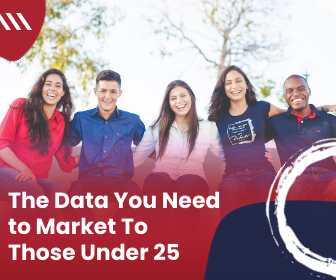
Do you ever read a statistic that just messes with your head? For example, I recently read that by 2022, 41% of the world’s population will be under 25. Which is crazy!! And creates an interesting marketing challenge. How can you effectively market to a generation who has grown up online and is constantly inundated with content and advertising?
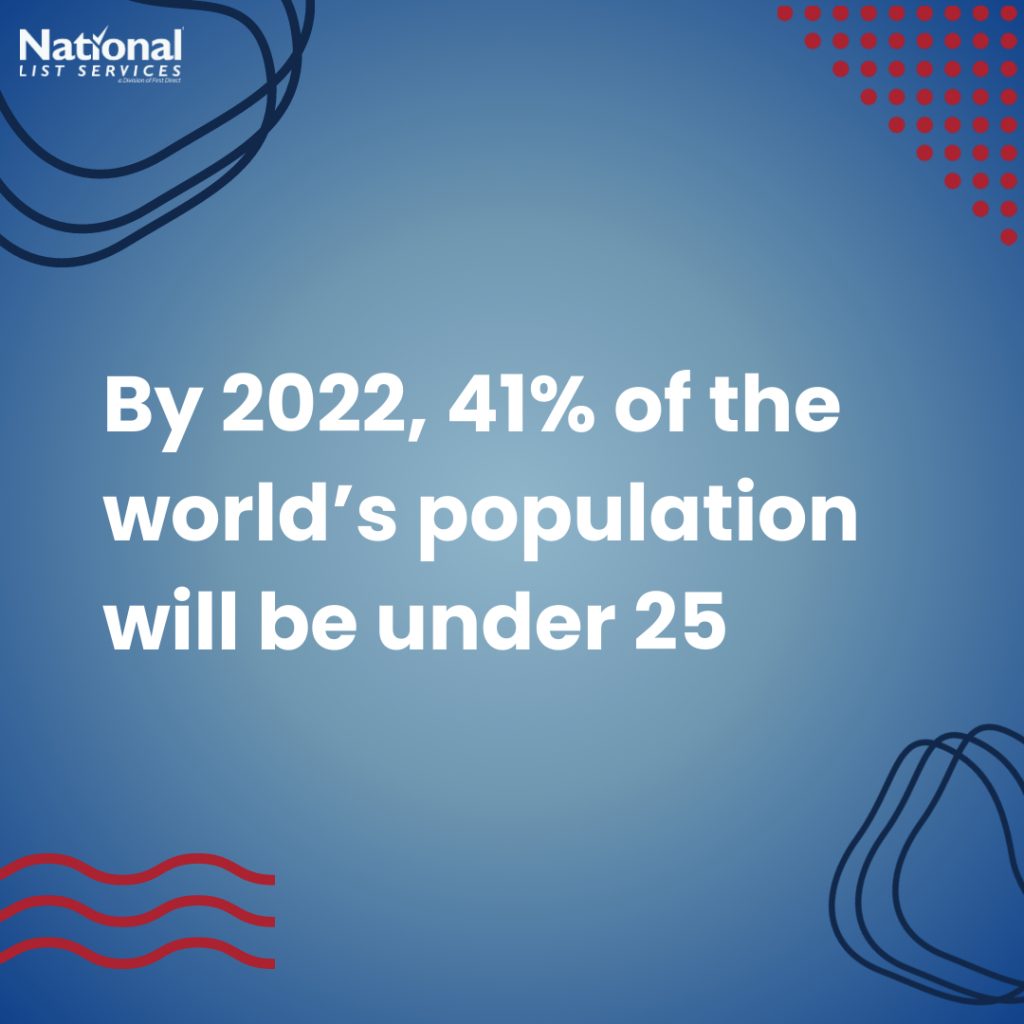
People under 25 not only take up a large share of the world’s population but they also make up a disproportionate amount of online and social media users. However, those of us in this age group statistically have shorter attention spans and tend to make decisive decisions about whether or not to consumer content or ads. A study in 2019 found that 64% of 18-24 tune out content from cluttered environments. Leading to 46% of advertisers saying that they have issues getting their content to stand out! Also, a third of advertisers say that it’s a challenge to find effective ad placement sin all the online clutter. What can you do to cut through all the online noise and reach this massive market?
#1 – Find Shared Passions
The sheer amount of product, companies, and information available is staggering. It is not enough anymore to have a good product available anymore, your brand ideals and personality need to match with the personality of your consumers. 56% of Gen Z consumers say that having shared passions and perspectives is a major factor when it comes to their engagement with a brand. However, Gen Z’ers are fantastic at sniffing out inauthenticity. Your brand personality and ideals need to actually be what you say they are. Actions speak louder than words!
What are the advantages of having a well-defined brand personality and ideals? Giving your company a personality makes things like content creation a lot easier. Knowing who you are also can help you make decisions about the direction you want to go in the future.
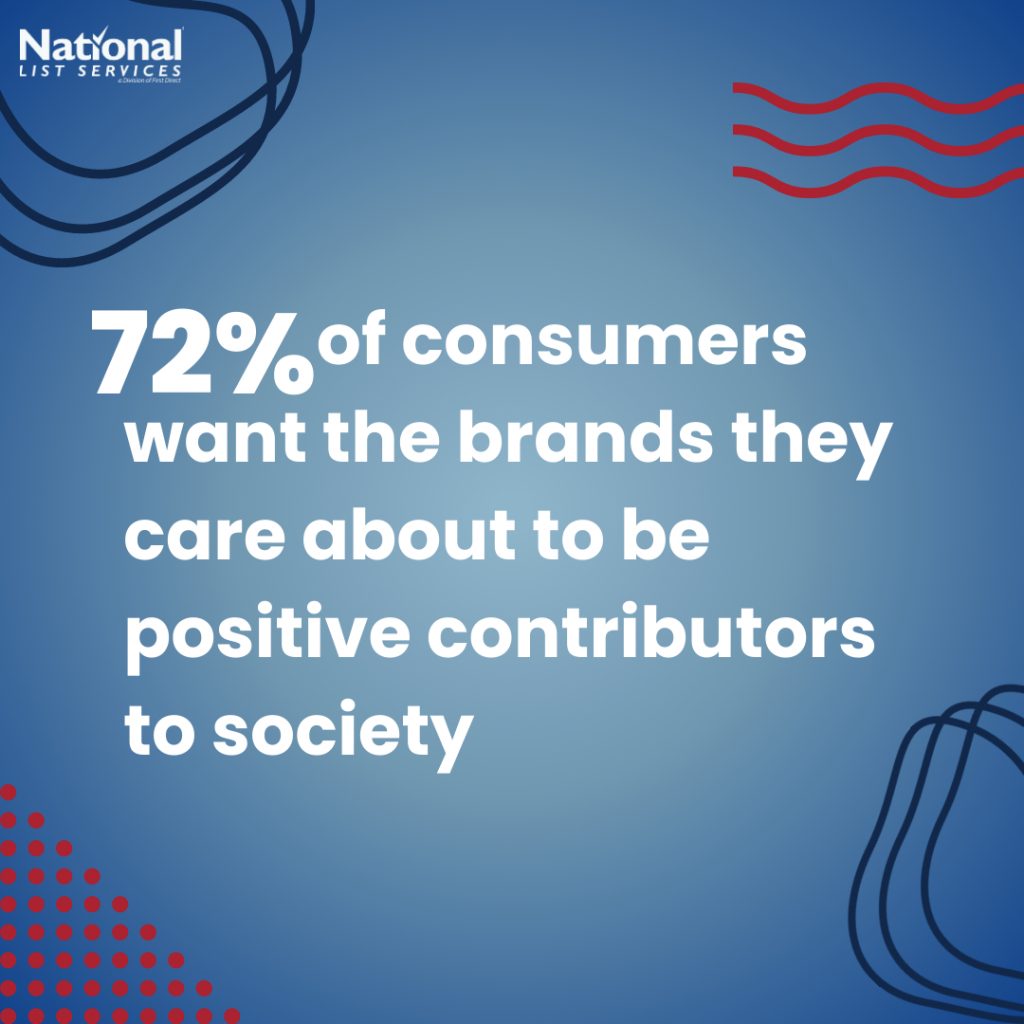
And 49% of young consumers say they will evangelize a brand they feel represents their values, likes, and personality.
Don’t be afraid of incorporating causes you care about into your brands personality! 72% of consumers want the brands they care about to be positive contributors to society. We’ve seen in recent years that many brands (especially smaller companies) connect their core brand to a charity or cause they care about. Younger consumers are 69% more likely to buy from a brand that contributes to a cause.
#2 – Choose Quality Locations
Younger generations are big on authenticity, brand trust, and quality. 74% of 18–24-year-olds believe that brands are responsible for where their ads are shown. Which is true! There’s very little excuse for having your ad show up on a website that doesn’t believe in the same things as you. Programmatic advertising and digital display ads give you a lot of control over your ad placement. Nearly 40% of advertisers have faced some backlash for having ads appear near low quality content. 54% of younger consumers say that ads placed near premium content inspires more trust in the ad itself!
#3 – Use Innovative Technology
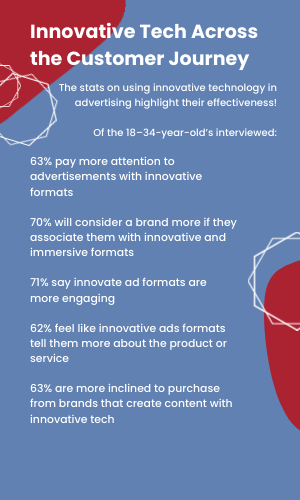
From AI and AR driven content to native and contextual ads, technologically advanced are advertisements are becoming more accessible. The stats on their effectiveness across the entire marketing journey speak for themselves!
Of the 18–34-year-old’s interviewed:
63% pay more attention to advertisements with innovative formats
70% will consider a brand more if they associate them with innovative and immersive formats
71% say innovate ad formats are more engaging
62% feel like innovative ads formats tell them more about the product or service
63% are more inclined to purchase from brands that create content with innovative tech
#4 – Personalization
Personalized ads are effective for every age group. Gen Z’ers and Millennials are less tolerant of ads that aren’t personalized. Most younger consumers have in innate understanding of how their personal data is used to create targeted ads. Being targeted (or retargeted) based on their interests and past activities are expected. Thankfully creating effective personalized ads are easier than ever to make.
- What can you do to create effective personalized ads? Start with the information you have about your customers. It’s difficult to know what your customers want if you don’t know who they are. Look at your 1st party data. What are your most common demographics? What are their interests? How would they most like to be communicated with?
- Use the tools available. Marketing automation platforms and CRMs can do a lot of the heavy lifting when it comes to segmenting data. Many of them are designed to help create simple, personalized messages.
- Have a well thought out plan. Do you have a mapped-out customer journey? Knowing where in their journey your customers are makes a big difference in the types of personalization that will work for them. Think about nurturing. Pay attention to the details. Make sure that there aren’t little annoying things such as, getting an abandoned cart email even though you’ve already come back to purchase it. Get rid of triggers that are connected to repurchasing products commonly only purchased once.
- Know when to walk away. Keep your data clean. If someone has never opened an email it might be a good idea to take them off your list. Their data could skew your demographics and could make understanding what personalization your active customers need difficult.
Is it effective?
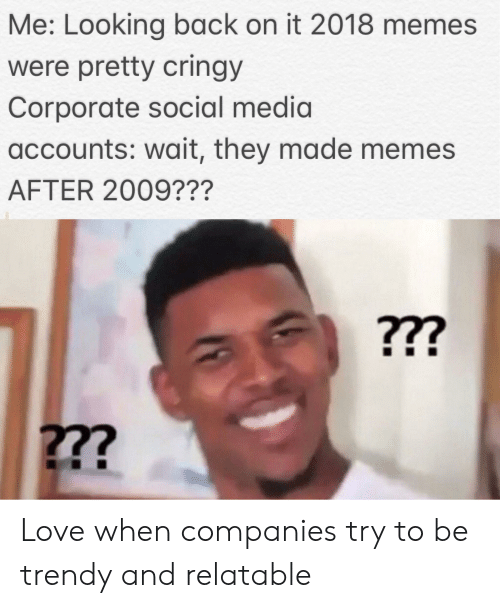
Is it effective? Yes! From that survey of consumer between the ages of 18-34, 58% said that a personalized ad helped them make a purchase decision. 42% also said that they had clicked on a sponsored ad in the last 6 months!
In my experience, a lot of companies panic when thinking about marketing to young consumers. They feel like they need to be relatable or “cool.” That often comes off as disingenuous and is easy to see right through. It’s far more effective to instead focus on building a relationship with them. Make it easier for them to see who you are and what you stand for. Chances are they care about the same things you do!
All The Things You Need To Boost SEO

SEO has proven over and over again that it is essential to growing (and maintaining) your business. However, it doesn’t often get the spotlight it deserves! So, here’s some things you need to know to boost SEO.
What is SEO?
SEO stands for search engine optimization. Search engines look at look at many site elements like structure and design, visitor behavior, content, and other external factors to decide how highly ranked your site should be in the results pages. SEO has become the catch all term for all things you can do to make your site look more appealing to search engines.
What are the advantages of good SEO?
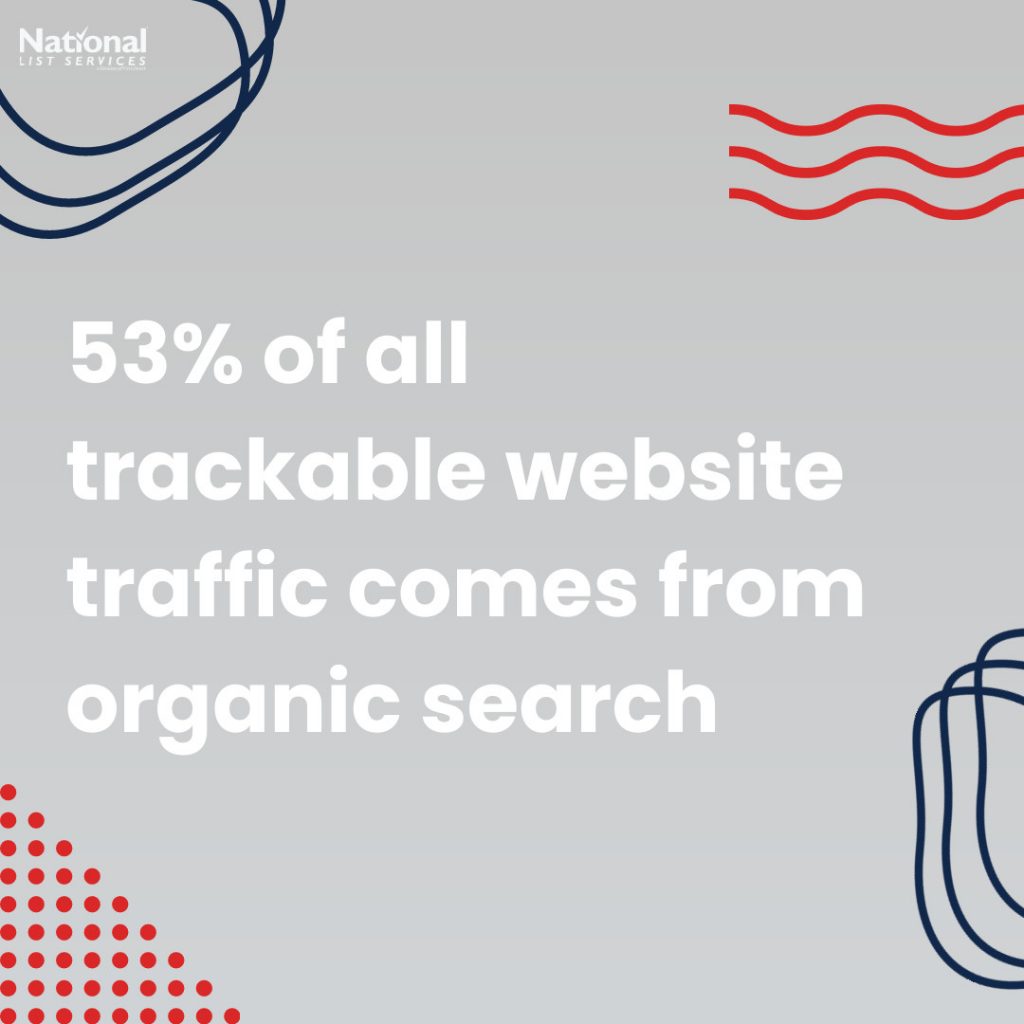
Good SEO gives your website credibility. It makes it easier for people to find your website when they search for it. And it helps create a smoother user experience.
The other important reason for making sure your websites SEO is up to snuff is that it helps generate organic traffic. 53% of all trackable website traffic comes from organic search. SEO is the main thing influencing how easy it is to find you online organically. Which is probably why it’s estimated that agencies and brands spent over $79.27 Billion on SEO services last year.
SEO is also important in driving local searches. When you search for “Best Pizza Place” near me, the results you are shown are based on the pizza place’s SEO keywords.
Where do you need to pay attention to SEO?
Everything “online” can be indexed and therefore optimized. Google indexes websites and apps that they own. So, your YouTube video search optimization is connected and combined with your website optimization. However, some companies, like Facebook, categorize videos and posts internally, meaning that it doesn’t help general search engine SEO.
What can you do to boost SEO?
Personally, I would split SEO into 2 main categories: Content and Categorization. Both are super important but require different things.
Content
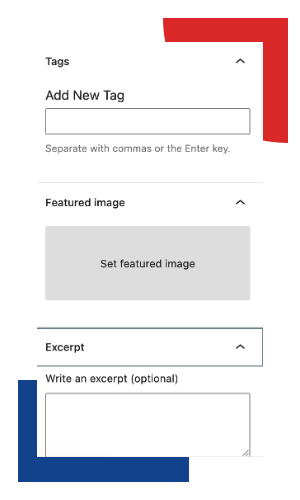
Content is all the things you put out there. Search engines look at what you are putting out there to determine your search rankings. Google likes blog articles and web pages with a lot of content. Adding pictures, videos, links, and charts shows search engines that what you are creating should be seen. They are going to rank something high in the search results if they don’t think its valuable.
To go along with that, search engines look at user experience. Is your website/blog easy to read? Do you have paragraphs, subheadings, punctuation, and spacing? Is it super short? (Long form content, over 2,000 words, tends to rank higher.) Do your pictures and video take a long time to load? How about accessibly? Do you have alt text for your images and text readers?
Search engines want to provide the best possible experience for its user and will rank your website accordingly.
Categorization
Categorization is all the “backend” stuff. Keywords, hashtags, blog categories, utm links, exerpts, and featured images all fall into this bucket. The best way to boost this type of SEO is literally just fill in every box provided. If the video you are uploading to YouTube as a field for title, description, keywords, hashtags, ect: give them that information! Search engines need to know what they are ranking, and all the backend information is how they know what it is and where it should go.
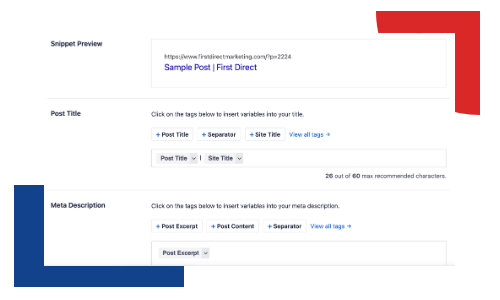
If you write an article called “How to make good pizza” the search engine will put with other information on pizza. However, if your article also has keywords like, “good pizza,” “how to,” “cooking,” “dinner for two,” “Italian food,” and so on, the search engine has a lot more places it can show the article.
Another thing you can do to boost SEO is to repurpose content. Search engines like to see a lot of content that revolves around a single topic. It shows a consistent brand message and purpose. A consistent brand message can indicate brand value.
What ways have you found to be effective in boosting SEO? Do you have a favorite method?
Should You Repurpose Content?

So, should you repurpose content? Yes! Recycling or repurposing content has a lot more advantages than just saving time. (Although that is very helpful. As the old adage says… Time is Money! 💰 )
What does it mean to repurpose or recycle content? There are a couple ways to do it. One way is to repost or reshare the content as is. A lot of companies do this with TBTs or just highlighting past content. Another way to repurpose content is to take old content and use it as an outline for new content.

For example, once a Live Video stream is over, the audio can be published as a podcast on platforms like Spotify or Apple Music. Video clips of highlights can be repurposed into social content or ads. As well as pull quotes. The transcript can be turned into a blog article.
(This article is based off an outline for a live video, that was in turn, based off another blog article, that was itself based off one of Live Roundtables. Content can generate other content.)
What’s Your Message?
If you have been making content for a while, you probably have a good idea of what your message is. So, no matter what you do, some part of everything you create will be a reiteration of something you’ve said better before. That’s a good thing! Constantly adding drastically different messaging can create a confusing overall brand message. Your brand pillars and values aren’t going to change so your general message probably won’t either.
For example, the foundation for everything we do is using accurate data to create effective marketing. All the content we create is in some way or another connected to that. Therefore, it makes sense that we reiterate ideas and messages. That doesn’t mean that we don’t have anything new to say because there are always new ways of approaching information. The world around us, as well as technology and industry standards are always changing. There are always new things that can be added. Adding information keeps your messages up to date. Up-to-date content is more accurate and provides for value to your followers.
Your Audience Grows and Changes
Another reason to recycle content is that it gives more people an opportunity to see it. And even if someone has been following you for a long time there’s a good chance that they didn’t see the content the first time around. Social media platforms notoriously fail to consistently promote content. And we are all busy, it’s easy to miss something. And your followers might appreciate or need a piece of content now, more than they did when it was first published. Repurposing the information is a way to help your customers get the information they need.
Know What Your Customers Need
The more times goes on, the more you know about your audience’s interests. We are all constantly learning about our followers and audience. The more time goes on the more First Party Data is available. Knowing more about who your customers are can help you to understand what content they actually need. You can then reframe the information that you know would more benefit them.
Recycling Content Boosts SEO
One added benefit of repurposing content is that it boosts SEO. Search engines like to see a lot of content that revolves around a single topic. It shows a consistent brand message and purpose. A consistent brand message can indicate brand value.
What ways do you repurpose content?
Data & The Instagram Algorithm
The Instagram algorithm is the bane of some people’s existence. And yes, it is confusing since they moved from a chronological feed. It’s important to know how to best leverage the Instagram algorithm to make sure your content is being seen!

According to Instagram, they decide to show your content based on 6 factors:
#1: Interest
#2: Relationship
#3: Timeliness
#4: Frequency
#5: Following
#6: Usage
The first three are somewhat self-explanatory. Instagram shows you things based on what you’ve liked in the past. They highlight posts from people they’ve decided are close to you: people whose content you most engage with, the people who tag you, the people you DM etc. Instagram also cares about when you post. Keeping track of your analytics can give you a good idea about when the best times to post for you are.

#4 Frequency isn’t about how often you post but instead about how often interact with the app. The more often you check your Instagram feed the more likely your feed will be chronological because they are always trying to show you the newest content available. This is helpful to understand what type of Instagram users your followers are. If they don’t check the app that often, then it will be harder to have your posts seen. Building up the other 5 components to the algorithm will be all the more important.
#5 Following
Instagram assigns value to follower counts in a couple different ways. First, is simple: the more followers you have the more likely your posts will be highlighted in your follower’s feeds. However, they also look at your follower’s engagement levels. If you have a lot of ghost followers that don’t interact with you, then they could actually be hurting you. Another thing to consider, the more people your followers follow the more competition for space in their feed. Do your followers follow a lot of people? Understanding that can help you decide if you need to adjust where you focus your efforts.

#6 Usage
This is how Instagram qualifies the amount of time spent on the app. The more time spent on the app, the deeper into its catalogs they have to pull from to show content. You can use this to your advantage by using hashtags or developing content that matches with the interests of Instagram’s heavy users.
What ways do you try to leverage the Instagram algorithm to work for you?
Should You Care About Social Media Analytics?

There are over 3.8 billion people on social media around the world. That’s a lot of people to advertise too, and a lot of businesses to compete with. That’s why using social media analytics is so important.
What are social media analytics? Social media analytics is all the data about your customers the social media platforms are gathering. Combining the data from multiple steams and platforms can give you a lot of information about your customers.
Here’s are some things you can learn:
- – What platforms your customers prefer to engage on
- – What content do your customers enjoy most
- – What type of campaign or advertising works for them?
- – Do they have any other hobbies or interests?
- – More specific customer analytics, such as age or gender
What have your learned from your social media analytics?
6 Tips for Effective Content Marketing

According to HubSpot, nearly 70% of business are investing in upping their content production this year. What can you do to make sure your content stands out from the rest?
Here are six steps:
- Figure out what you want to accomplish. Goals are key to any plan. The Content Marketing Institute (CMI) suggests outlining your goals in a formal business plan. It will also be helpful to outline what value you are going to provide your customers with your content and any possible challenges.
- Figure out your audience. Knowing who you want to reach makes it much easier to know what type of content they’ll want to engage with.
- Remember your own branding. What do you want your customers to know about you? What problems can you solve for them? How are you different from your competitors? Knowing what your overarching message will help you choose the right type content and tone.
- Figure out what type of content your audience will respond to. There are so many different types of content, such as blog posts, eBooks, videos, podcasts, webinars, newsletters, etc. However, not all of them will be effective for your audience.
- Keep a schedule. You’ll need a clear plan of attack, especially if different parts of your organization will be involved in content. HubSpot recommends implementing an editorial and a social media calendar. To keep tract of when are where content is going out. Doing so will also help keep your messaging cohesive.
- Keep track of engagement. Keeping track of analytics will help you learn your content’s effectiveness. You can use what you’ve learned about what works or your audience to inform upcoming decisions and make your content continually more effective.
Want more information on how to make your content marketing more effective? Get in touch here.
